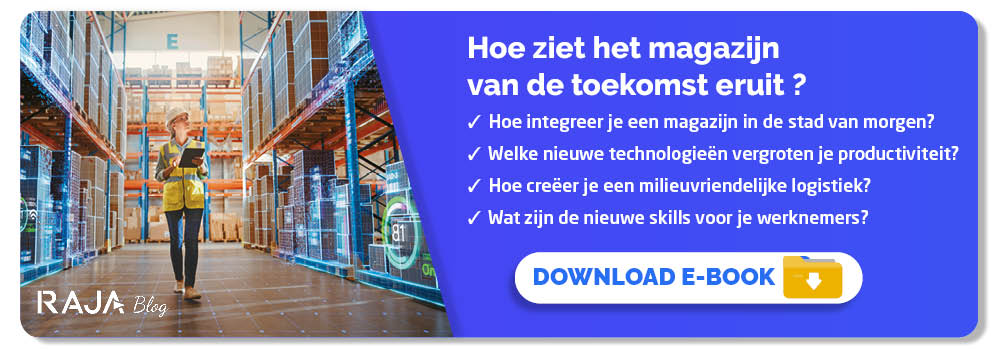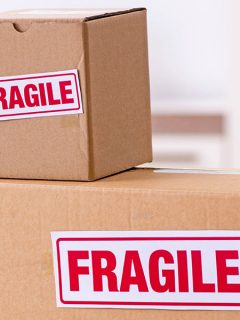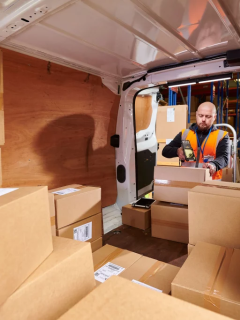The last few miles that your package travels to your end customer are often just the most expensive. But why exactly is that? Most consumers still prefer delivery to their home or place of work, so transporters have to stop at many different locations. Add to this the fact that many parcels cannot be delivered the first time (because the customer happened not to be at home), and you end up with a lot of back-and-forth. And that costs a lot of time and money, of course…
Can you use packaging and other solutions to improve this ‘last mile delivery’ and reduce costs? Here, we look at some alternatives to be economical, customer-friendly and ecological.
1. What is a last mile delivery?
When delivering your products and orders, the last miles they travel are usually just the most expensive. The closer your products get to their final destination, the more expensive the unit cost of transport will become. That peak is reached at the last mile. According to some studies, last-mile delivery represents up to 20% of total supply chain costs.
These high shipping costs are compounded by the ‘scattered destinations‘ of your parcels. The final destinations of each separate customer are often not just next door to each other. Moreover, the just-in-time principle also plays a major role: customers expect to be delivered as soon as possible – preferably in 24 hours. This makes it difficult for distributors and transporters to optimise their goods flows. Everything has to get out the door as quickly as possible. It is precisely in this context that it is vital to consider new shipping solutions to overcome the challenge of last-mile delivery. Practice teaches us that last-mile delivery can be negative for you if you transport (too) few goods to (too) many different destinations.
Unit cost is an important factor in the logistics world and varies depending on transport conditions. Suppose you have a van transporting boxes of shoes from factory A to distribution centre B. Let's say the trip costs €300.
- Situation 1: 200 pairs of shoes are transported from A to B. The transport cost per unit is then 300/200 = €1.50.
- Situation 2: your van transports only 40 pairs of shoes. The cost per unit is now €7.50.
This example illustrates the challenge of last-mile delivery and unit cost: the fewer goods you transport during the last mile, the more expensive your transport.

2. Why is good last-mile delivery so important?
Because last-mile delivery is at the very end of your chain, it is not always clear what improvements you can make in it. After all, you yourself no longer have any concrete insight into what exactly happens to your parcels once they are in the hands of the carrier. However, a smart supply chain has a bigger impact on your business than you might think… That is why we collected three reasons why last-mile delivery deserves more attention in your company. Read more below.
2.1 Reduce transport costs
As you could read above, unit transport costs have a big impact on your bottom line. By taking a smarter approach to last-mile delivery, you will reduce these costs and, with a bit of luck, you will also be able to get your products to market cheaper. If you look into this, you will be able to significantly improve your competitive position.
2.2 Improve the customer experience
Delivery errors and misunderstandings are one of the biggest annoyances among consumers. When last-mile delivery doesn’t go smoothly, it doesn’t just impact your carrier. It can also affect your own company’s image. Research shows that more than 80% of consumers do not order again if they experience delivery problems. When choosing a carrier, it is therefore best to ask yourself the right questions:
- Is the carrier used to delivering your kind of goods? This is decisive in assuring yourself that your goods will reach the customer in good condition.
- Can delivery deadlines be met?
- Does the carrier offer alternative, environmentally friendly shipping solutions that you can promote to your customers?
2.3 Reduce pollution and emissions
Why are the last kilometres of a transport so polluting? Simply because many vehicles still transport too much ‘air’. Many boxes and parcels, for example, are not optimally filled, which wastes valuable space in a van or truck. Transporting that useless air therefore becomes very expensive and is anything but environmentally friendly. One of the solutions to this is smart, compact packaging. You can read below what such compact packaging might look like in concrete terms.
3. Four steps to successful delivery
Always make those last miles of your delivery a success with the following products, solutions and tricks.
3.1 Reduce the empty spaces in your packaging
Packing as compactly as possible: that’s where it all starts. Reduce the volume of your parcels to save space in your carriers’ loading space. This allows your carrier to take more parcels on its round at once. Besides, by packing extra compactly, you increase the chances of your parcel fitting smoothly into a letterbox slot. This eliminates the need for a second or third delivery attempt. All this offers not only an economic advantage, but also an ecological one, as less CO2 is emitted. Do you want to optimise the volume weight of your parcel? Then opt for one of the following solutions:
Box with variable height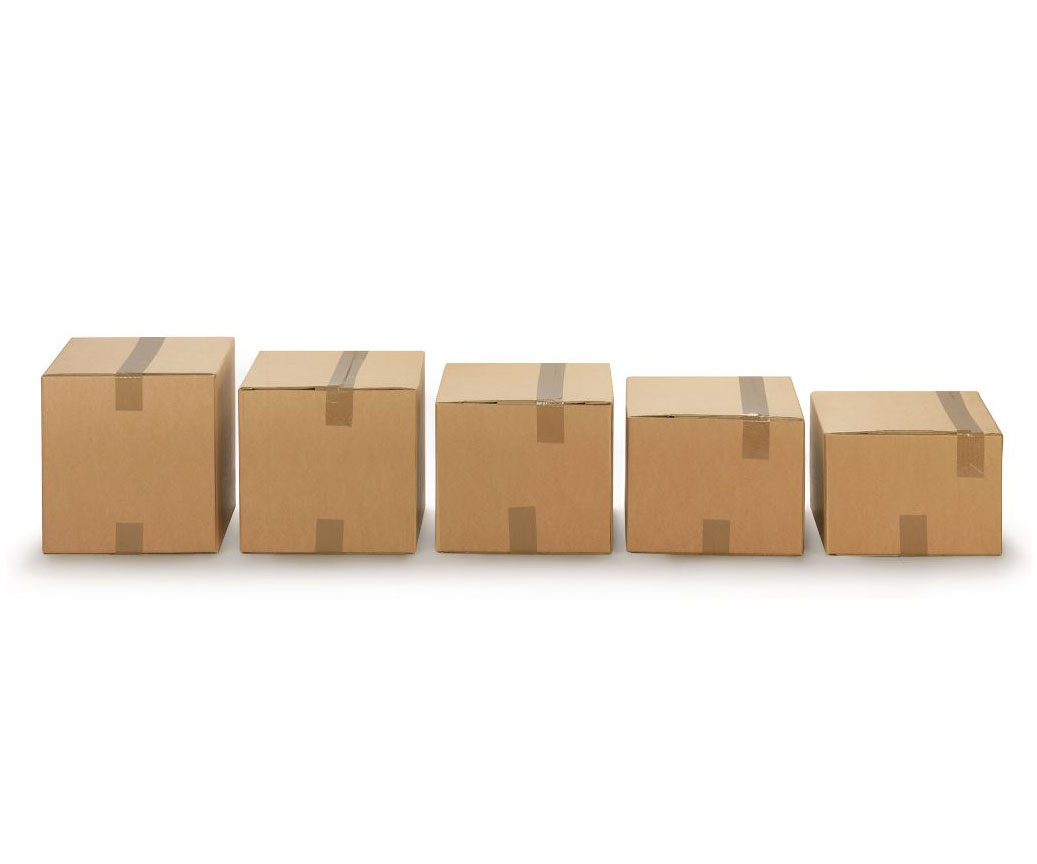 |
. –Adjust the height of your box: to do this, cut into the flap up to the desired crease line. –Up to 12 different heights for a single box. –Limit the empty space in your parcel. |
Shipping bags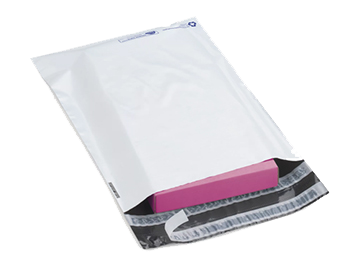 |
. – Flexible and light: simply push excess air out of the bag. The bag adapts perfectly to your product. –Resistant to tears, perforations and water. –Great for shipping textiles and clothing, for example. |
Letterbox boxes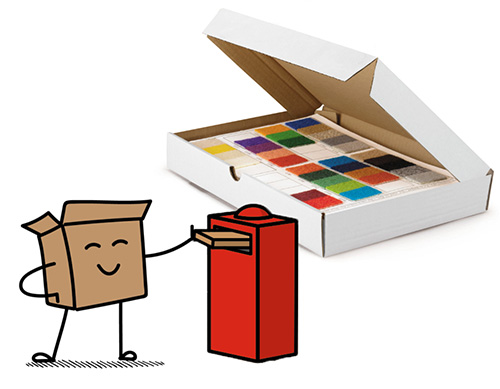 |
. – Extra flat design to fit through any standard letterbox slot. – Easy to open due to the notch at the front of the box. – Kraft paperouter lining for extra protection. |
3.2 Choose the right location for your warehouse
Choosing the right location for your warehouse is crucial for successful last-mile delivery. It is best to locate your warehouse as close as possible to the delivery areas you want to serve. This naturally makes transit times shorter and more efficient. The most sought-after locations are therefore on the outskirts of large urban areas, and easily accessible from main roads. Want to know more about this topic? Then read more about the development of logistics centres in and around the city of tomorrow here.
3.3 Choose shared deliveries
In shared delivery, 1 vehicle is deployed at the same time within the same zone. This allows several businesses within a small area to be served at the same time. For example, you can choose to make arrangements with other companies in your zone to bundle deliveries and orders more from now on. This way, fewer transport movements are needed which can reduce costs.
Say your truck for today is only half full of goods. You can then agree with another company (your neighbour, for example) to fill that empty space with its goods – as long as these goods have to go in the same direction. That way, you can already share the cost for part of the route.
3.4 Choose eco-friendly transport
Transporting your goods sustainably offers more options every day. More and more transport companies offer alternatives that allow you to reduce greenhouse gas emissions. For example, ask about companies that offer deliveries by bicycle courier. Or go for electric cargo bikes and cars if you need to deliver larger parcels. They are ideal for city centres, where (air) pollution has a big impact.
Who knows, in the not-too-distant future, delivery could also be done by drones. Not only does it not emit CO2, it can also significantly reduce delivery time. Even the most remote addresses can thus receive their parcels quickly and easily. For now, however, this remains an experimental option and reserved for the delivery of small parcels.
See all of RAJA’s solutions for compact packing here.










